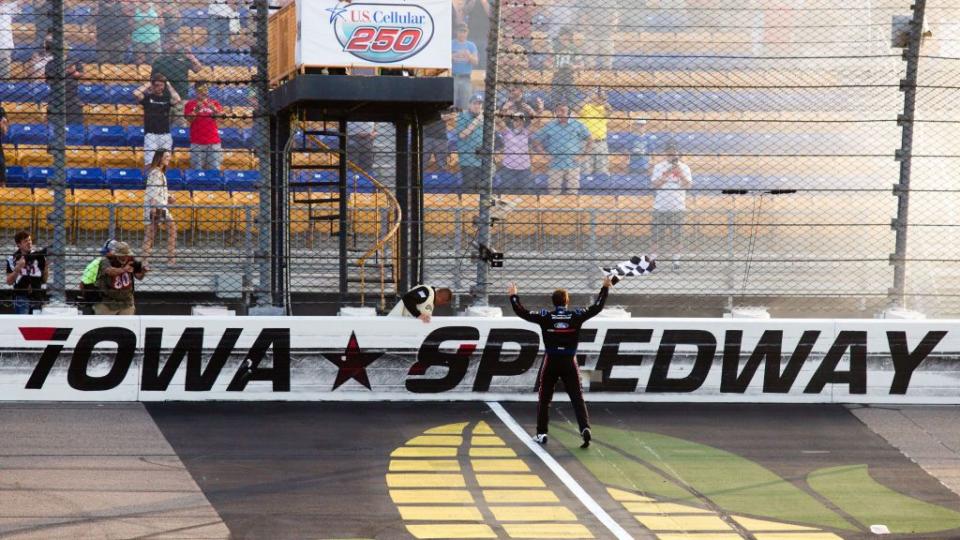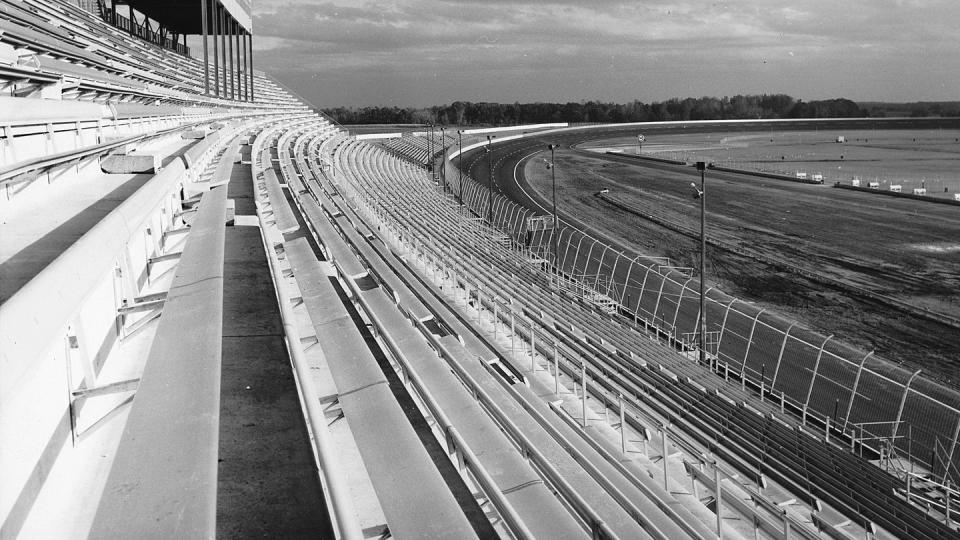NASCAR Bringing Cup Series to Iowa

After waiting almost 17 years for the call, Iowa Speedway at Newton will get a NASCAR Cup Series race next summer.
The 7/8ths-mile, D-shaped track has hosted various open-wheel series and lower-division NASCAR series in recent years, but the June 16, 2024 Cup race will be its first since it opened in 2006.
The full Cup schedule hasn’t been officially confirmed, but several of the usual dates are already known. In keeping with NASCAR’s goal of staying at 36 races, the addition of Iowa Speedway means a speedway currently on the schedule will lose a date. Speculation on which track will lose a date is just that—pure speculation, and NASCAR doesn’t dare show its hand until it’s ready.
It’s been confirmed that the season-opening Daytona 500 will be Feb. 18, the Memorial Day weekend Coca-Cola will be May 26, the annual Southern 500 will be Sept. 1, and the season-ending championship race will be in Phoenix on Nov. 3. The pre-season Busch Lite Clash in the L.A. Coliseum is confirmed for Feb. 4 and the all-star race at North Wilkesboro, N.C. is confirmed for May 19.
Two scheduling changes seem to have hit a positive chord with fans: Bristol Motor Speedway has dumped its dirt race in favor of another 500-lapper on its half-mile of asphalt sometime in the spring. And the July 21 Brickyard 400 will return to the 2.5-mile Indianapolis Motor Speedway “long course” rather than its infield road course.
NASCAR Schedule Oddities
• The shortest season was eight races in 1949, NASCAR’s first season. It quickly expanded to as many as 56 races in 1956 and reached a series-high 62 in 1964. At the time, teams sometimes ran two or three times a week, many of them on short dirt tracks.
• The schedule was cut dramatically in 1972, when R.J. Reynolds Tobacco Co. brought in tens of millions of dollars for marketing and advertising. RJR and NASCAR president Bill France Sr. agreed that fewer “major events” on longer, faster, bigger speedways in populated areas were better than four or five dozen races jammed between February and November. In truth, some of the shorter races on lesser-known venues received only scant national attention and were not missed.
• The reduced schedule meant almost a dozen half-mile or shorter tracks – both paved and dirt – would lose their traditional Cup dates. Among them were long-time NASCAR fixtures in Greenville and Columbia in South Carolina; Asheville, Hickory and Raleigh in North Carolina; Beltsville, Md.; Oxford, Me.; Islip, N.Y.; Hampton and South Boston in Virginia; Savannah, Macon, and Augusta in Georgia; and Montgomery and Birmingham in Alabama;
• Joining the tour as 1969 moved into the 1970s with RJR’s money were new tracks in Dover, Del., Brooklyn, Mich., College Station, Tx., Talladega, Ala., Pocono, Pa., and the short-lived track at Ontario, Ca. The only short tracks to survive the purge and keep their Cup dates were in Richmond, Va., Martinsville, Va., Bristol, Tenn., North Wilkesboro, N.C., and (for a while) Nashville, Tenn..

• NASCAR’s first “true” paved-track race (and its first 500-miler) was the 1950 Southern 500 at Darlington, S.C. The 4.15-mile highway-beach course near Daytona Beach hosted 10 Cup races between 1949 and 1958, using part of southbound Route A1A (paved) and the hard-packed northbound sand of the nearby beach. The first “true” road race was in June of 1954, when Al Keller drove a Jaguar to victory in a 50-lap, 100-mile race on the 2.0-mile airport course at Linden, N.J.

 Yahoo Autos
Yahoo Autos 